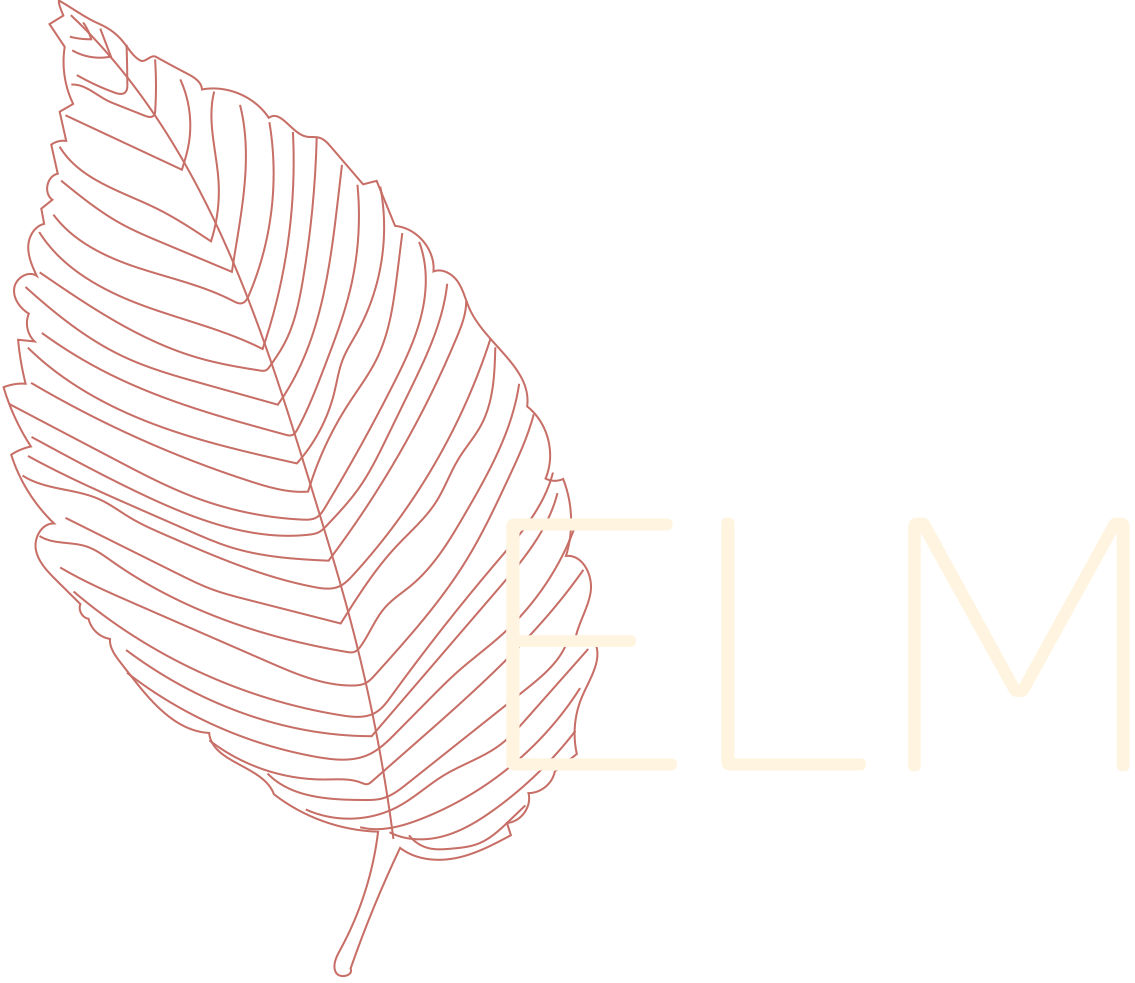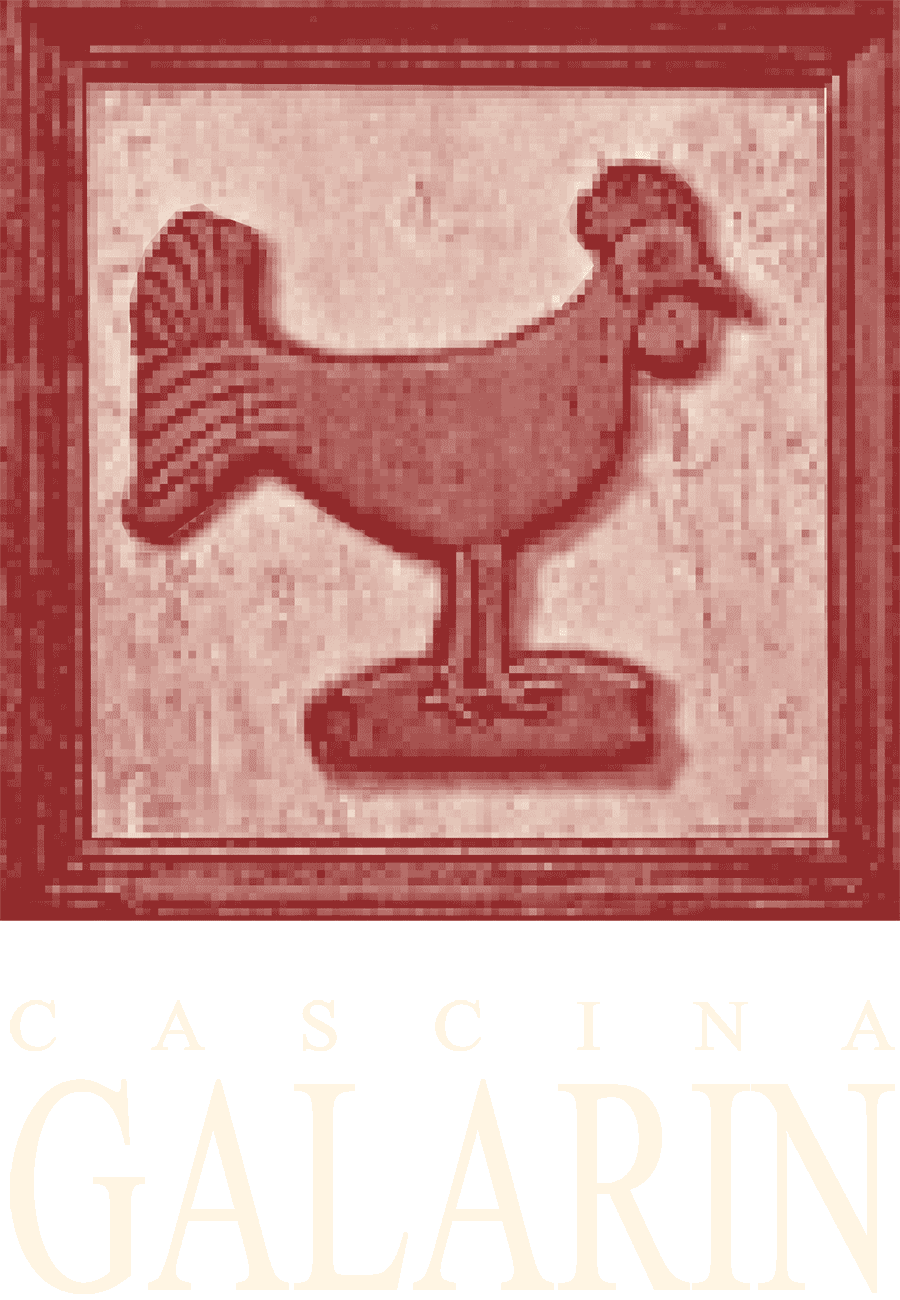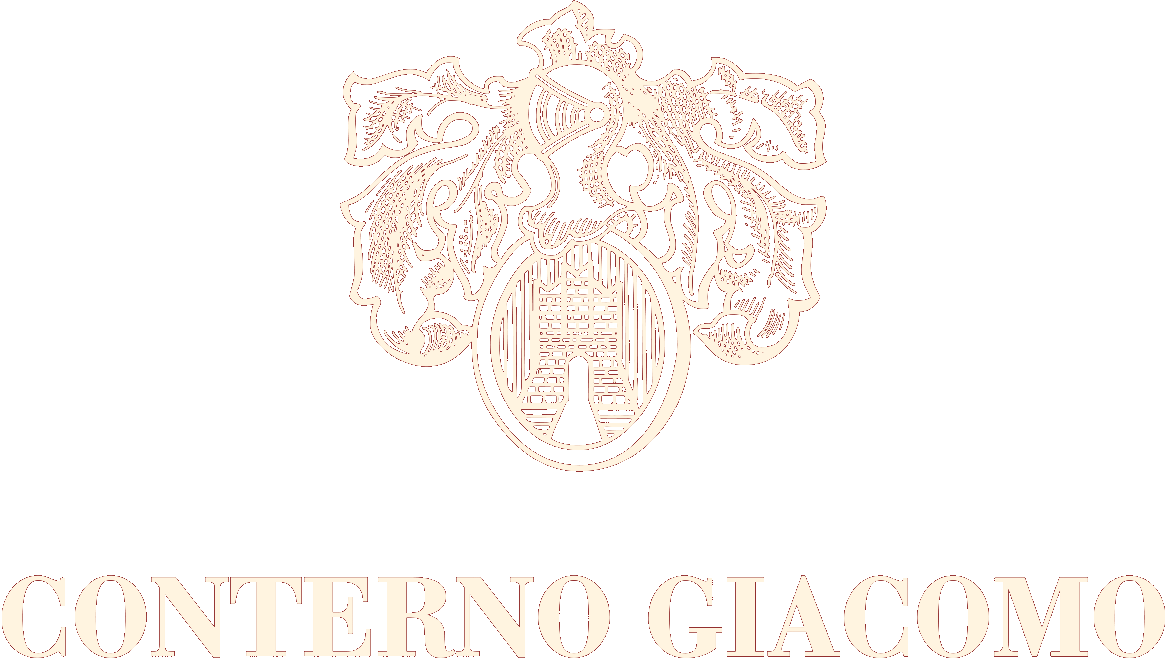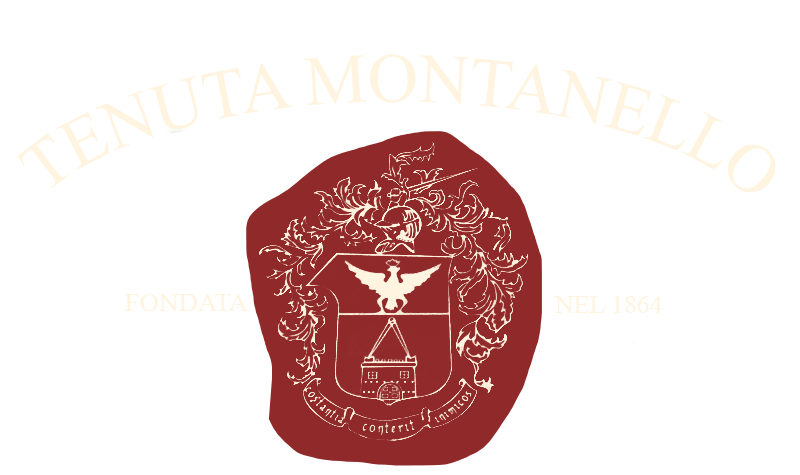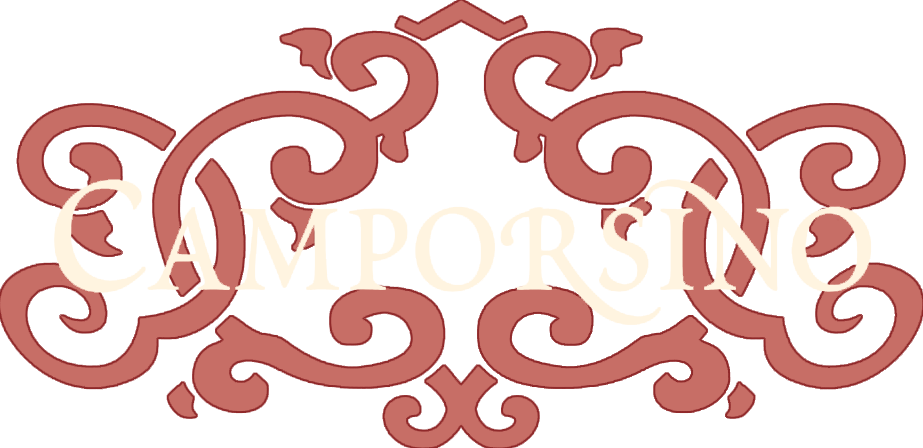THE PRODUCERS WE REPRESENT


SOUTH AUSTRALIA
ELDERSLIE
We’ve known Adam Wadewitz for many years through Melbourne wine trade associations, and have watched his impressive progress over the years and admired his many achievements. Elderslie is the brand that Adam shares with Nicole Roberts, herself well entrenched in the wine industry, with varied and significant experience on the sales and marketing side of the trade. They make a strong team, and this is their story.
Adam and Nicole first met at university, before following their own paths to forge exciting careers in the industry they both love. After vintages overseas and all around Australia, they gravitated back to the Adelaide Hills and reacquainted. Both with young families, they found themselves thinking similar things about life and wine: “We wanted to drink wines that are a pleasure – simply delicious; that aren’t high in alcohol; that are a delightful, pure expression of a site and its season.” And so, Elderslie was born.
Both wines come from high altitude, late ripening sites in the Adelaide Hills.
Hills Blend #1 is 100% Pinot Blanc but understandably, given Adam’s current tenure with Shaw + Smith and Tolpuddle vineyards, is treated more in line with traditional Chardonnay techniques. The wine shows restrained power with bright savoury characters and has the textural feel of Pinot variants due to time in oak and on lees.
Hills Blend #2 is a blend of Pinots Meunier and Noir, again coming off some of the higher sites found in the Hills - one being an old traditional sparkling site. Both varieties are co-fermented and it probably comes as no surprise that the resultant wine is full of intensity and vigour, supported by wonderful purity and density.
ELM
Emerging winemaker Madeleine Marson has launched her first wines under the ELM label. ELM wines pay tribute to the upbringing Madeleine and her two sisters, Emily and Laura (together ELM), had in the Yarra Valley and Heathcote, where winemaking and the traditions of the Italian family table were strongly held. A long (official and unofficial) apprenticeship under the instruction of her father, Mario Marson, followed, and together they now run Vinea Marson in Heathcote. There, Madeleine got her hands on some parcels of fruit from Heathcote and the Alpine Valleys and crafted these playful takes on Italian family favourites. The ‘Bomba Rosso’ and ‘Bomba Bianco’ are lively wines inspired by Friulian red and white blends, designed to be enjoyed at the table with good food and in the company of family and friends. ELM ‘Bomba Bianco’ is made from white varieties typical of north-eastern Italy’s Friuli region, where blended wines are popular to create food-friendly, dry white wines. With a delightful nose of meadow flowers, honey, cinnamon and nutmeg, the wine’s rich and complex palate is complemented by typical phenolic diversity and good length. ELM ‘Bomba Rosso’ takes an Australian approach to Friulian blends, with Heathcote Shiraz’s bright fruit concentration married with the enticing savouriness of Nebbiolo. A complex nose of red berries, blackcurrants, liquorice and dried herbs is followed by a rich and intense palate with dry and chewy tannins typical of the Nebbiolo variety.
PRAETER
Matt Large, is a busy man, but at the core of his pursuit, is his own brand Praeter, the name of which is a nod to the idea that wine is an extension and amplification of the expression of nature.
Matt is an intuitive winemaker, always seeking to create precise and sensitive wines that clearly express a sense of place, while employing best-practice sustainable viticulture. This talent was recognised early in his career and led to a relatively rapid ascension through the winemaking ranks. Having previously worked as Assistant Winemaker and Vineyard Manager at Shadowfax Winery – across their Macedon Ranges sites - Matt has recently accepted a role as senior winemaker at Shaw + Smith and Tolpuddle Vineyard under Adam Wadewitz.
For a long time, Matt had a desire to work in Piedmont and grasp the intricacies of the vineyards as well as learn the traditional techniques of Barolo and Barbaresco. Enter Peter Johns, who introduced Matt to ex-Bruno Giacosa winemaker, Francesco Versio in 2017, creating a watershed moment in the development of the Praeter brand. Matt worked vintage with Francesco in 2017 at Figli Luigi Oddero in La Morra and was asked to take on a permanent vintage Assistant Winemaker role – a position he still holds today. Using fruit from Luigi Oddero’s vineyards, Matt also made his first wine under the Praeter label there, the 2017 Vino Rosso.
After that first vintage stint, Matt managed to secure a parcel of Nebbiolo from the Malakoff Vineyard in Victoria from the 2018 vintage, and the Praeter offering was fleshed out a little more. That story was strengthened further when Matt was given access to a parcel of Riesling fruit from Austin’s vineyard in Geelong, a vineyard he had worked with previously.
2019 saw the release of Matt’s first trio of wines, and 2020 will see the release of his first Langhe Nebbiolo, the 2018, a DOC wine from an adventurous young Aussie winemaker.
VINEA MARSON
The inspiration behind Vinea Marson stems from winemaker Mario Marson’s Italian winemaking heritage – stretching back some four generations. Mario’s grandfathers grew and made Friulano, Cabernet and Merlot and his great-grandfather, Giuseppe Zaghet, was chief winemaker for the local landowner, the padrone of Villa Brunetta at Prata di Pordenone, based in Friuli in the early twentieth century. This was transferred to suburban Melbourne where his migrant father, Giuseppe, planted rows of vines in their backyard to bring wine to the dinner table each night. Mario continued this tradition both as viticulturalist and winemaker for some twenty years in the Yarra Valley – mostly at Mount Mary Estate. In 2000, Mario and his wife Helen established an eight hectare vineyard in the foothills of the Mount Camel Range at Heathcote bringing the traditions of the old world to winemaking in the new.
There’s a Friulano saying that best encapsulates the viticultural and winemaking philosophy embraced at Vinea Marson – sans, onest e lavoradors – strong, honest and hardworking. Mario planted a range of imported and local Italian clones of Sangiovese, and Nebbiolo which he believed would thrive in the rich, volcanic Cambrian soils and Shiraz, the predominant variety of the region and Viognier were also planted.
This love of wine extends further afield, or closer to home depending on your view, as Mario sources indigenous northern Italian varieties Malvasia d’Istria, Friulano, Picolit and Pinot Bianco from fruit grown at Porepunkah in the Alpine Valleys of north-eastern Victoria. With its cool climate and soil minerality, this area is the perfect site for Mario to explore his north eastern Italian winemaking heritage.

WESTERN AUSTRALIA
VINO VOLTA
Vino Volta was founded in 2018 by Garth Cliff and K risten McGann - w ine industry lifers. A spirit of experimentation and adventure underpins Vino Volta, as does a focus on approachability. They craft vibrant and textural wines with a focus on natural ferments and low interference. Fruit is predominantly sourced from Swan Valley and extends to a couple of other regions with a focus on varieties that suit warmer climates.
Garth and Kristen lease a couple of vineyards that they farm organically and supplement this by buying grapes from the best vineyards of the region. They are terroir focused and look at older vines and soil types suited to each variety. Swan Valley and Swan District the wine regions just outside of Perth, boast 185+ years in grape/wine production. This is their home. Vino Volta focus on Chenin Blanc and Grenache, the regional stars and make multiple expressions of these grapes ranging from Pet Nat through to seriously good and drinkable whites and reds. They also express old varieties of the region in a non-traditional way through their ‘Different Skins’ Frontignac/Gewurtztraminer. Exploring warm climate suited varieties that naturally attain balance and require low inputs in the winery to produce bright textural wines is always their aim.
Of course, our focus at Primavera Selections is Italian, and Vino Volta means, among other things in other languages, ‘wine time’ in Italian. Kristen is also our exceptional distribution agent for Western Australia, and her and Garth are also self-confessed devotees of all things Italian. Logically, their stable has extended into a bright Dolcetto and a Fiano that we can’t get enough of! Perhaps more ‘vino’ to come but in the interim, we are excited by what they do, and who they are, and we are proud to represent the West in the East.
CIAVOLICH
We have always understood how big a ticket Montepulciano D’Abruzzo is, in Australia and around the world. In our travels, we had struggled to find one that fit our idea of the right example of this style is. Enter Chiara Ciavolich and her ebullient and expressive wines from Abruzzo.
Having grown up watching her father make good wine for the region of Abruzzo, it would seem Chiara’s future was set for her, but instead she decided to head to Rome to study law. It wasn’t until her father suffered a severe stroke in 1995 that Chiara found her way back the vines. In 2003, Chiara made the pivotal decision to leave her future as a lawyer behind and take over the family business. At that point she didn’t have so much wine knowledge. Of course, she grew up with winemakers in her family who made good, easy to drink wines of the territory, but these weren’t the wines that would gain attraction outside of their region. Chiara began to apply herself in the vineyard and in the cellar, quickly gaining insight and discovering her palate. She was fortunate to have such important guidance and mentorship from her godfather Doctor D’Amario who had worked alongside her father in the cellar and is still an important part of the operation today offering support and lineage into their historical past. Chiara applied herself and dedicated everything to Ciavolich wines. What was first her duty, became her passion, and now is her life’s work.
Over the years, Chiara has found her true expression through wine and the Ciavolich range is the result of her contribution to the family cellar. Nowadays, Ciavolich is one of the most notable wine producers in Abruzzo and is found in many of the most important export markets in the world. Chiara’s style walks a beautiful line between fresh, vibrant, and lively, while staying true to the territory, authenticity, and structure of the regional grapes and what they can achieve.
ERSTE + NEUE
It's intriguing - one of Italy's many, many quirks and contradictions - that the majority Germans of this northern part of Alto Adige - the Südtirol - seem so content to be...well, Italians? The signposts to Erste & Neue are a mix of German and Italian (often in brackets), otherwise you just better know already that they are located in Kaltern (Caldaro) a beautiful little town 25mins due south/west of Bolzano. But it's worth it to visit this wonderful collective, a description more appropriate perhaps, than co-operative.
The 'Old & New' is the result of a merger in 1986 of one group founded in 1900 with the 'newies ' a crew merely dating back to 1926. Between them, their members brought together a wonderful collection of heritage, expertise and vineyards, of such variety, siting and quality. There's an array of soil types in this glacial valley ranging in altitude from 250m to 650m - moraine, loam, calc, clay, you name it - and each provides the best backdrop to the Alto Adige classics - their speciality, the Pinots Bianco (which E+ N of course call Weissburgunder) and Grigio. The reds are benchmark versions, from the delicious light and fruity Schiava to the dense, blue-purple and powerful Lagrein.


ALTO ADIGE
KÖFERERHOF
Some of the most exciting wines of Europe are grown in a tiny valley in the very far north of Italy’s Alto Adige region known as Eisacktaler (or Valle Isarco, in the ‘secondary’ Italian language). These exquisite, textured, icily-structured whites offer intrigue and excitement with their power and complexity and have put this relatively quiet wine region on the map.
Master of these wines is Guenther Kerschbaumer who is also proprietor of this tiny estate, made up of a patchwork of little vineyards at 700-800 metres at the foot of the Dolomites. Each of these plots are unique terroirs and are planted specifically to suit to each variety. Although a Kofererhof estate has existed for nearly 900 years, it’s only since grandfather Kerschbaumer acquired it, and his son and now grandson Guenther have plotted and replanted, that varieties like Kerner, Sylvaner, Riesling, Pinot Grigio and Müller Thurgau are sited with such precision.
Stylistically, these Eisacktaler whites are quite distinguishable and more Germanic or even Alsatian in style than those vineyards closer to Bolzano. These are whites of greater body and texture than the lower AA, with perhaps more nuanced and complex aromatics that are still backed with a similar, almost taut structural underlay, mineral notes and piercing acid profile.
Organically farmed and run by the Kerschbaumer family since the 1940s using a mix of modern and traditional winemaking practices that respect their grape varieties, these wines are considered by many to be some of Italy’s best white wines.


FRIULI–VENEZIA-GIULIA
IL CARPINO
Il Carpino sits on the ‘Golden Strip’, along with their closest neighbours, Gravner and Radikon, you probably haven’t heard of them, but they have been alive since the late 1980’s. What makes them unassuming is their tiny production. When we were able to make an appointment with owners/winemakers Ana and Franco in March 2019, we were blown away with how pure and tantalizing these wines were. Alas, no wines were available, so we had to ‘take a ticket’ and wait in line. Their slice of land is on the border (quite literally), further inland and at a higher altitude than most producers. This grape haven is regarded as a cooler pocket and produces wines with more definition, brightness and mineral inflections than those in other pockets of the region that are perhaps seen as more fruit forward.
Though wineries in the area have catapulted skin contact wines into things of folklore, in this part of Italy this treatment is relatively new. Ribolla Gialla, Friulano, Malvasia, Pinot Grigio and Sauvignon Blanc lend themselves to long term skin contact extremely well. Il Carpino’s vini macerati di Friuli are white wines made in a red wine way with extended contact on skins and explode with layers of richness, phenolic texture and their signature amber/orange colour. No sulfur or other additives are used and biodynamic practices, such as following the lunar moon cycle play an integral part in the production.
Il Carpino’s ‘Vigna Runc’ range are made from younger vineyards and made in a more conventional way with stainless steel ferments and are released comparatively early to maintain their crisp, flavorsome, fresh styles. They are incredibly exciting wines, and we are delighted to have them in our portfolio.
BIONDELLI
The centre of this family wine estate lies in a gorgeous 16th century farmhouse located in front of the historic medieval castle of Bornato (today’s villa Orlando) and at the inception of the charming Longarone Valley, settled near the village of Bornato, in the province of Brescia. It’s the same place where in 1438, during the war between the Duchy of Milan and the Republic of Venice for the control of the territories of Brescia and Bergamo, the troops from Milan (under the command of Nicolò Piccinino) fought against the Venetian soldiers led by Antonio Martinengo from Brescia and Erasmo da Narni, better known as ‘Gattamelata’ (one of the greatest military leaders of the Italian Renascence).
These days the ancient farmhouse has been completely restored and developed with the construction of an underground wine cellar. This modern structure is perfect to vinify the different types of grapes grown on their Estate with the main focus on Chardonnay for Franciacorta Brut and Satèn Brut, while like many producers in the region, small parcels of the red varieties such as Cabernet Sauvignon, Cabernet Franc, Merlot, Nebbiolo and Barbera are constantly on the ‘project table’.
Today, very much a family affair, Carlottavio Biondelli, along with his wife Mariella and his sons Francesco and Joska, run the business with passion and devotion. In particular, Joska, fresh from his own ‘diplomatic’ service abroad as a head-hunter in London, has returned to realize the dream initiated by his father in 2000.
DOWNLOAD FURTHER PRODUCER INFO
SANDRO FAY
Due to its challenging climate and terrain, Valtellina was once regarded as the last frontier of Italian viticulture. Tucked up in the northern pocket of Lombardy hugging the Swiss border, Valtellina has come a long way in a short period of time and is steadily shaking off the ‘Piedmont’s poor cousin’ label. The wines I have looked at here have carved a path entirely their own. Although the Valtellina Valley is only a 2.5hr drive from Milan, it’s surprisingly isolated and is often spoken about as being the least explored wine region in the country. To the north are the imposing Swiss Alps, and to the south is the Orobie Bergamo National Park. The valley runs from East to West split down the middle by the Adda River and is broken up into 5 subzones. At the eastern end of the valley in the zone of Valgella, near the town of Teglio where you will find the tiny Estate of Sandro Fay.
Like many producers in this region, Sandro Fay focuses on Chiavennasca (named after the nearby town of Chiavenna) – the region’s specialty and their unique expression of Nebbiolo. In recent times, global pressures have encouraged Valtellina producers to re-label their wines as Nebbiolo – In my opinion, a real shame! Almost all of Fay’s wines come from the Valgella zone which gets little tempering influence from Lake Como, resulting in a classic alpine vine growing area when coupled with the fact that their vineyards range between 400m and 800m. It’s also worth noting that the soil breakdown here is almost the opposite to the Langhe with literally no traces of clay or limestone. Here, it is mostly primary rock and sand which proves to work well with their climate and choice of vines. Sandro Fay first commercially produced wine back in 1973, but in recent times, his son Marco (winemaker) and daughter Elena (sales & marketing) took over the reins, so it’s truly a family managed Estate. Although the region is regarded as one of the most challenging in Italy to make quality wine, Fay are highly regarded and produce an array of wonderfully food orientated wines that show vitality, racy acidity, salty minerals and lingering fine tannins. Maybe the closest Nebbiolo comes to Pinot Noir?

LOCALITY: Barolo Commune, Barolo
WINEMAKER: Maria-Teresa Mascarello

PIEDMONT
BARTOLO MASCARELLO
Maria-Teresa Mascarello ably carries the torch handed down from her father Bartolo after his death in 2005, arguably taking the wines to a place of greater consistency, vibrancy and detail through considered and careful changes, while remaining staunchly traditional. Having returned from her foreign language and literature studies, Maria Teresa joined Bartolo in 1994, and as his health and mobility declined later that decade, assumed more and more of the day-to-day control of the cantina.
Established in 1918 by Maria Teresa’s grandfather and Bartolo’s father, Giulio, with a loan of 10,000 lire from his father Bartolomeo, Cantina Bartolo Mascarello’s vineyards amounted to 4 hectares by the 1930s, and has only grown to 5 hectares in the ensuing years with the purchase of a parcel of land from a cousin in the 1980s. As in times past, only one Barolo is produced, blending fruit from Cannubi, San Lorenzo and Rue (Barolo), with Rocche dell’Annunziata (La Morra). Never have they succumbed to the temptation of a single cru wine, believing that the blending of sites affords greater consistency in the finished wine, particularly in drier vintages.
Not interested in making a perfect wine, but only a true one, Maria Teresa is adamant that the vineyard is where great wine is made and, as such, pesticides and herbicides are eschewed, while rigorous selection is employed prior to fruit entering the cantina, where the level of intervention and manipulation is kept to the bare minimum. Fermentation takes place in large concrete vats dating from the 1940s, in the absence of temperature control and with naturally occurring yeasts. Maceration times are long, averaging 30 days and up to 56 days – in 2010. Ageing in large Slavonian botti follows for 3 years, before a further year in bottle prior to release.
Aside from the single Barolo, Barbera and pristine Dolcetto are produced from grapes grown in San Lorenzo and Rue on aspects less kind to Nebbiolo, though undoubtedly in the hands of others they would not be home to these less valuable varieties. Further Dolcetto comes from Monrobiolo di Bussia, along with Freisa that after a period on Nebbiolo skins to gain tannin and alcohol is bottled with a slight degree of spritz, as was the tradition.
BREZZA
While the distinction between the modernist and traditionalist producers of Barolo may not be as binary as it is often portrayed, there is no question that the approach and philosophy of Brezza place them firmly in the latter camp. We’ve long admired the endeavours of Enzo Brezza, and feel that his efforts and attention over the past decade or so have seen the wines reach new heights – tradition with an eye to the future. We are very excited to welcome Brezza to the Primavera fold!
When you think of the Barolo region and its respective communes, arguably the spiritual and geographical centre is the commune of Barolo. Nestled on the outskirts of the village, in the high section of the famed Cannubi cru, is where you’ll find the cantina of Brezza, proudly managed by fourth generation family member Enzo Brezza. The family have been based here since 1885, which puts them in the classic camp, and although many producers may have strayed from one side to the other, Enzo has kept things as they have been since the start. All wines undergo long, spontaneous ferments/maceration, with the upper-tiered wines spending lengthy spells in large Slavonian botti. The wines are not filtered or fined before bottling.
Over the years, a project close to Enzo’s heart has been the maintenance and protection of his vineyards, which lie mostly in the Barolo commune, including crus such as Sarmassa, Castellero and Cannubi – arguably the grand cru of Barolo, which Enzo handles in a classic way, with his wine often looking shy and austere on release, but in time it blossoms into a spectacular expression, building power, complexity and thrills. Organic farming has always been their viticultural ethos, but since 2015 all wines are now certified, and, in many cases, sealed with Vinolok glass closures, which in Enzo’s words “respects the tradition but embraces progression.” From our point of view, this has made a significant change across their wines for the better!
Based in lighter Tortonian soils, predominantly made up of silt sand and clay with traces of limestone, the wines show wonderful fragrance and perfumed notes with softer, more approachable tannins compared to the communes found down in the south. As for the accommodation, it has one of the best views of the Barolo Castello and the village, and their ristorante is one of the more authentic dining experiences in the region, with a focus on local and seasonal produce.
CASCINA GALARIN
The cellar of Cascina Galarin was built in the 1700s, and when it came time to construct the family home, they decided to add an extra touch to the solid wood front door – a carving of a rooster. The door still exists, and it is from here that the name and logo of the winery, Galarin, was drawn. Historically, the family grew grapes and sold them off to other wineries. Towards the end of the 80s, Giuseppe Carosso realised the importance of the growing process and meticulously tended to their vineyards. This extra attention began to show in the quality of the grapes, and Giuseppe started to make and bottle wine under the family label. Today, Giuseppe is joined by his two sons, Marco and Giovanni, who wholly appreciate the nuances in soil, weather, aspect, topography and their effect on each vine. Organic practices are employed throughout, and the deep roots of old vines add natural stability and resistance to disease, as well as providing naturally low yields. Complementary to this is their belief in the minimal use of sulphur in the winemaking process and bottling during the days of a waning moon. Now under the management of winemaking authority Francesco Versio, great care is given to each stage of the winemaking process, from the vineyard to the bottle. The resulting wines are clear and fruit-pure expressions of their grape varieties.
CASCINA LUISIN
Thinking about how to describe Cascina Luisin, without a doubt the best place to start is with their real-estate, and what real-estate it is! With key land holdings in some of the most acclaimed Crus in the Langhe including the highly prized Asili and Rabaja vineyards with their Cascina sitting above the latter, providing a sensational, panoramic view - arguably two of the most important vineyards in the Langhe. This is a small, family estate that dates back to 1913 and today is run by fourth generation, Roberto Minuto along with his father Luigi. Luisin produce around 2,500 cases each year and have ownership in various communes totalling around 7 hectares.
Roberto joined his father in 1995 after completing his viticultural studies and interestingly, post his studies, they briefly trialled rotary and barrel fermentation before quickly realising that Nebbiolo was most at home in cement. For their 3-single cru expressions of Barbaresco, very traditional methods are used – slow fermentation/macerations are carried out in cement, followed by extended maturation in large format oak, with all 3 wines made the same way to highlight the expression of each vineyard site….and to paint the picture, these are not your blackstrap, forced and wooded wonders; these are amazingly fragrant, gentle but persistent Barbaresci, almost Pinot-like, with strawberry, flowers, cherry skin and orange notes…and of course with that vital little extra touch of tingling grip. Apart from their 3 flagship wines, the winery also produces a fresh Roero Arneis, bright crunchy Dolcetto, old-vine Barbera and a beautiful sweet/herbal Chinato.
CONTERNO GIACOMO
If you ask any cluster of somms, influencers, collectors, wine geeks or the like, ‘Who is the number one producer of Italy?’, chances are they’ll nominate Giacomo Conterno. It’s their most famous Barolo of all, ‘Monfortino’ that people usually have in mind. Usually that is, unless they might mean the remarkable ‘Francia’. That this ‘regular’ Conterno Barolo is also a contender for the best, just attests to the widespread appreciation of the Conterno approach to everything they do. Nothing is, or ever was, left to chance, or in the control of others, in the quest to make the best Nebbiolo and Barbera from the family’s Serralunga vineyards.
In fact, until Giovanni Conterno brought the 16 ha of ‘Cascina Francia’ in 1974, their wines had been made from purchased grapes, but selected with a singular eye for pedigree and quality. The known original ‘Monfortino’ (1920) for example, was made from Monforte grapes. The estate’s founder, Giacomo, was famous as much as anything else, for his legendary coverage, mostly by foot, of vast swathes of Barolo, tasting and observing at harvest time for the prime fruit. Today, current custodian Roberto still cites his own taste as his fundamental ‘technology’ at every stage of harvest and production.
Roberto keenly appreciates what being the benchmark for Barolo can mean in a commercial world that makes such a rarity of his wines. In the laboratory and in production, Roberto has adapted and refined equipment like his utterly unique destemmer to operate at remarkable levels of sensitivity. Back into the vineyard, and continuous trials like the massale selections, have to pass sufficient time to satisfy Roberto’s fastidious expectations. This helps explain why wines from the ‘recent’ acquisitions of theoretically superb parcels of Serralunga crus, ‘Cerretta’ (2008) and ‘Arione’ (2015) have taken so long to be seen under a Conterno label.
Conterno remain at heart, and in practice, traditional Barolo makers. There is little deviation from the long macerations for both ‘Francia’ and ‘Monfortino’ and the long time spent in large oak; around four years and up to eight (but sometimes even 10+) for the these, respectively. The results, while dark, layered and concentrated, always have a magical energy about them. When we have been lucky enough to taste these wines, in barrel or finished, it is only with Roberto. If the wines tell him it’s time to bottle, nothing stands in the way of total attention to that task. This is Conterno.
DOWNLOAD FURTHER PRODUCER INFO
DOMENICO CLERICO
My first memories of Domenico Clerico from my trips to Barolo were from some years back, driving south from the commune of Barolo, and approaching the T-intersection to turn off towards Monforte – on the right is their standout, magnificently impressive and architecturally designed estate. I suppose, in some ways, before I first met Domenico Clerico and visited his winery, I already had developed thoughts on his wines, and seeing this structure helped confirm this – rich, powerful and modern wines with a level of polish and sophistication. What did surprise me, though, was how small Domenico’s production was compared to the impression given from this imposing estate.
Taking over from his father in the late 70s, in his early years, Domenico Clerico had the foresight to begin acquiring more real estate in Monforte, which (perhaps by luck) included parcels of land in some of the most sought-after crus. These famous vineyards included Bussia, Ginestra, Pajana and Mosconi.
Although regarded as one of the leaders of the modernist movement, in recent times there has been a clear step away from this very ‘new world’ approach, with a significant reduction in the amount of new wood used, along with the addition of some larger-format oak (and even the odd concrete egg fermenter!) now being found at the winery. Other changes, such as slower fermentation and maceration times are helping show each cru’s individuality. Over the past 4–5 years, chief Oenologist Oscar Arrivabene has been working as Domenico Clerico’s right-hand man, and with the passing of Domenico Clerico in July, Oscar has fully taken the reins.
LOCALITY: Neive, Barbaresco
WINEMAKER: Francesco Versio

PIEDMONT
FRANCESCO VERSIO
Born and raised in the Hamlet of Albesani, very close to the iconic town of Barbaresco, Francesco Versio completed his viticulture studies at the local Umberto 1 Wine School in Alba in 2005 and then graduated from the University of Turin with his complete qualifications in 2009. On completion of his studies, he spent a brief period of time working for a large local co-operative before landing a highly sought after role at the famed Bruno Giacosa in Neive. Initially under the watchful eye of Dante Scaglione, he was soon elevated chief oenologist, a position he still holds. Showing uncanny foresight, before Francesco was born, his family purchased two tiny plots of old vines in the southern part of the commune of Neive – one is the vineyard of San Cristoforo which was planted back in 1969. The other being the vineyard of Curra which is a little older and lies just below San Cristoforo. Both of these Crus have classic south-west exposure, ideal for the temperamental Nebbiolo grapes to flourish. Although both Crus are joined, San Cristoforo has more limestone, giving freshness and perfume, while Curra has more text book sandy alluvial soils imparting a warm softness to the wine. From his time with Bruno Giacosa, Francesco has learnt to handle his wines in a similar fashion, paying respect to the more traditional methods.
As Francesco had his hands full for some time, until recently the family had sold the fruit to other vignerons. In 2012, this all changed with the release of the inaugural Francesco Versio 2013 Barbaresco early in 2016 and as the vineyards are so small, only 200 dozen bottles were made. All grapes are fermented and macerated in stainless steel, then racked off into the fashionable Austrian ‘Stockinger’ Botti. Outside the fact that Francesco is one of the up and coming young stars in the region due to his winemaking abilities, he’s also a terrific bloke to spend some time with!

PIEDMONT
LUIGI ODDERO & FIGLI
Luigi Oddero and the history of his family have certainly earned the reputation for holding the mantle as one of the more famous producers in the region. As patriarchs of Barolo, the family’s history dates back to 1788 when labels from their Estate were sold and when you step foot in their cellars, the place feels like it’s steeped in history. They are based in the commune of La Morra, in the frazione of Annunziata with the family owning prime land holdings in the communes of La Morra, Castiglione Falletto and Serralunga. As one would expect, wines from Luigi Oddero are made as they were many years ago with (at times) lengthy macerations and use of low toast large format oak (sourced from local cooper Gamba) for their top tier DOCG wines.
In 2006, after 50 years of intensely tending the vines and making the wines, Luigi was obliged to depart from the family Estate in La Morra and create his own label - Luigi Oddero. He took with him his wife Lena, their two young children, as well as 32 hectares of the most desirable vineyards from the 3 mentioned communes above. Unfortunately, he passed away is 2009 and the Estate is now guided by his wife, Lena Oddero who has built a powerful team behind her that includes Francesco Versio (winemaker) and famous local oenologist, Dante Scaglione, former winemaker at Bruno Giacosa. The core of their DOC wines come from their vineyards owned within the Santa Maria Cru, while their high-end DOCG Baroli come from a selection of some of the best crus within the region including Santa Maria (La Morra), Rocche dei Rivera (Castiglione Falletto) and Broglio (Serralunga d’Alba).
LUIGI PIRA
The story of the Pira family is the story of Barolo, one told about people of great warmth and integrity. Always seeking quality and improvement, the Pira family are workers of the land, using the grape Nebbiolo (and Barbera and Dolcetto) as the medium through which their particular terroir can speak. Like many Langhe families, the Pira’s started as growers, and they eventually established an azienda agricola based in the heart of Serralunga.
Pira are not solely about Barolo. Their Dolcetto, Barbera and Nebbiolo are very highly regarded versions, powerful and distinctive. The Dolcetto, vinified in steel and entirely from estate fruit from below Serralunga village, is quite dark, black-blue and almost glossy, a really bright style of lifted violet florals and deep dark cherry. Barbera is always a very strong suit for Pira, and theirs comes from a unique, calcareous-clay-rich vineyard (similar to their home vineyards, but 4km away in Roddino) that the family always admired and eventually purchased. The wine is a wonderful ambassador for Barbera, showcasing those dual features of juiciness and structure. The relatively small production of Pira’s famed Langhe Nebbiolo is due to it being effectively a ‘baby Barolo’, with it made from only very high-quality fruit. This wine is used by keen observers as a guide for the yet to be released Barolo vintage.
The cluster of famous crus owned by the Pira family are the premier vineyards around Serralunga village, with Margheria and Marenca just separated from the great Vigna Rionda. Barolo ‘Serralunga’ is the Pira normale, an assemblage of the three crus and a symphony of their elements: porcini, smoke, cola, cherry and spices. Margheria is very distinctive, the ‘reddest’ of the wines, with ironstone, choc-cherry, roses and some of the darker notes of cola and porcini – this is all larger cask these days. Marenca is only offered as a cru by Pira – the other owner, Angelo Gaja, use theirs in Barolo ‘Sperss’. ‘Marenca’ is characterised by a darker and more earthy palette of leather, tobacco, stock, black cherry, chocolate and dark spices – the epitome of Serralunga. The great ‘Vigna Rionda’ is an immensely powerful Serralunga Barolo of layers and swirls, underpinned by a fierce, tingling structure. On its day, a Pira ‘Vigna Rionda’ seems endless.
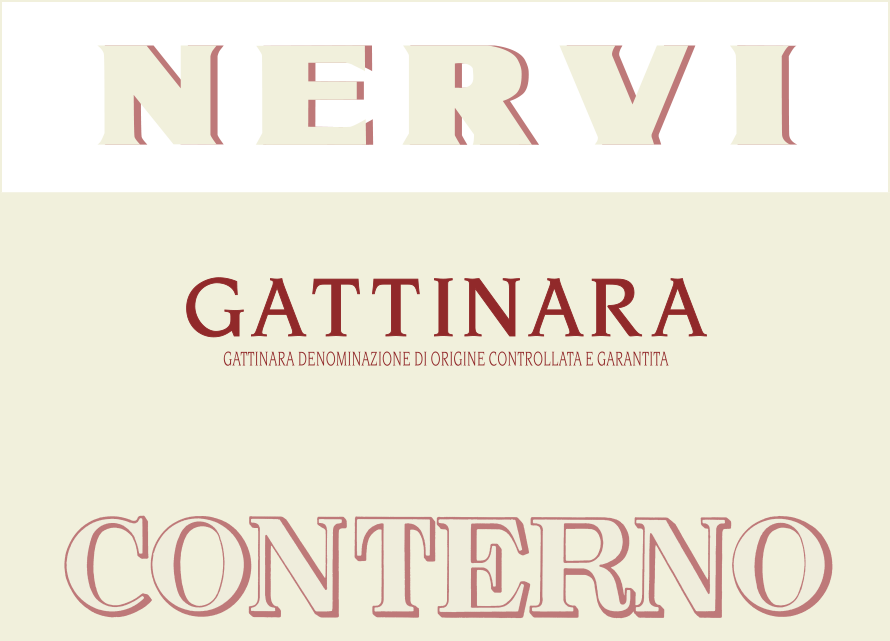

PIEDMONT
NERVI-CONTERNO GATTINARA
Gattinara became a DOCG in 1990, but due to its size and historical inaccessibility to the market it has largely been a region only for those in the know. Examples from superior vintages, like ’61, ’64, ’78 or ’96, which have occasionally been seen here, prove it is a clear rival to the best Langhe Nebbiolo. Roberto Conterno certainly thinks so, with his admiration for the capacity for Nebbiolo to generate thrilling wines from this tiny 65-hectare appellation given dramatic illustration by his recent purchase of the original producer of Gattinara, Nervi. At times on recent visits to the Langhe, we have been told, “Roberto can’t receive your visit on that day, as he is in the north…” Now we know why.
Roberto has seen it a strength to retain existing local contact and expertise, so he has encouraged previous owners the Astrup family and the winemaker Enrico Fileppo – with his experience of 30 plus Gattinara vintages – to remain. An exciting new chapter for all involved.
There are three main Nervi-Conterno Gattinara wines. The vintage Gattinara, effectively the normale, is comprised of four key plots, Casacce, Garavoglie, Molsino and Valferana. The wine is fermented and macerated in steel at controlled temperatures for 20–30 days, followed by 30 months in large wood. The two cru, or individual vineyard wines, come from Valferana and Molsino and are fermented and macerated in the large conical wooden tini for a similar 3–4 weeks, and then aged for another 40 months in large format wood of various sizes. ‘Valferana’ is the more austere, reflecting the nervous, tightly-wound core gifted by Gattinara’s mineral/gravel soils, a disciplined wine with a symphony of mineral notes, graphite, cranberry and citrus. ‘Molsino’ is lush by comparison, still fiercely underpinned by structure and tang, but more generous with cherry, plum and balsamic (local bush sage) in the background.

LOCALITY: Gavi, Piedmont
WINEMAKER: Diego Bergaglio

PIEDMONT
NICOLA BERGAGLIO
Since 1946 Gianluigi Bergaglio has grown Cortese on his 18 hectare estates near the town of Gavi. Nicola Bergaglio were one of the first known wineries in the now designated area to produce their own wines, not just sell their grapes off. Gianluigi was joined by his son Diego who is now the winemaker, and though both are quiet achievers, preferring to let the wines speak for themselves, it is evident that they are very proud of what they do.
Cortese the grape is indigenous to this area and has not scientifically been linked to any other grape variety in the world, it is truly regional. Most of the 3000 hectares of the grape are planted around the town of Gavi in the south east of Piedmont, in the province of Alessandria, along the Lemme river. Vines are planted on hills with calcareous soil composition like most parts of Piedmont.
Some of the very best sites are owned by the Bergaglios who organically farm their estates. On their hills, there is a constant breeze, generated either by the Ligurian Sea or from the Alps and nature parks to the north and west. This creates a constant shift in day and night time temperatures which helps to create an elegant and harmonious play of fruit and higher acidity in the grapes that are grown here. The Bergaglios believe in crus and site expression and pick and vinify their grapes separately into 2 unique wines. Their single vineyard Minaia site is considered by all to be one of the best in the entire region.
TENUTA MONTANELLO
This little treasure of Castiglione Falletto first came into Australia late in the 80's. Not sustained, as those tannins were maybe just a bit too much for us in those days? But an '82 Montanello Barolo seen recently, was glorious, and enough to put this on track to get back in. A generally trad and unforced style of Barolo - the other varietals follow a similar path - the wines all come off the Estate, which is located within the cru Montanello, virtually a monopole, with 98% owned by the Racca family who brought the property in 1864. Sitting right in the middle of Castiglione Falletto, Montanello is superbly sited, mostly south and south-west facing, with a consistent soil profile of calcareous and the classic blue tufa. This ideal aspect is probably the reason that a little over two-thirds of their Estate is dedicated to Nebbiolo.
The style of Nebbiolo here is heavier, more in the manner of neighbouring Monprivato, Parussi or Bricco Boschis, than the vivid red fruits a little further south. Think more blue fruits but still with typical rose and violets. As expected, tannins are evident but they’re beautifully integrated and plush, an element mastered by 5th generation maker Alberto Racca. Winemaking is low-key with Barolo being fermented in steel and elevated for 2 years in Allier barrels. One particular detail of a clearly successful tannin management regime, is a very gentle press to avoid any tearing of skins. The other varietals, a juicy, dark cherry and tart Dolcetto, the crunchy Barbera with Monforte violets and a spot-on fresh fruits style of Langhe Nebbiolo are each made and elevated in steel. Like the Barolo, these are unforced and natural, authentic and at ease on the table. There's nothing hurried or forced here.
GROSJEAN
Tucked up in the far north-west corner of Italy, Valle d’Aosta is the smallest region in the country. What it lacks in size, it more than makes up for in a dynamic range of varietal expressions. Surrounded by the Swiss Alps to the north and French Alps to the west - this tiny mountainous valley is one of most spectacular we have seen in Italy.
This 16-hectare estate has been within the same family for over 50 years and they are specialists of site selection. ‘Maybe home with its products and riches, is really the place from where to start building something more beautiful and healthier’. This is Simon Grosjean and family’s position in continuing on from two previous generations’ organic approach to their estate. His Grandfather Dauphin, knew in his heart that pesticides or acaricides were wrong and Simon’s father carried that through to Organic certification in 2011, the first winery in Valle d’Aosta to achieve this.
In basic terms, the valley is broken into 3 altitude levels - the lowest as you drive up from Piedmont and enter the valley, the mid around the town of Aosta itself, and the highest section around the town of La Selle. The Winery of Grosjean is conveniently positioned in the mid-section of the valley, near the town of Aosta. Vineyard altitudes range between 600 – 800m, allowing them to grow a wide range of both indigenous and international varieties.
There is a wonderful melding of the influence of the three bordering countries, and this is evident in the choice of grapes grown, (i.e. Chardonnay, Fumin and Petit Arvine) with some of the wines spending time in mostly old, tight grained oak coming from France. Across the range, partly due to such a large diurnal shift (the greatest in all of Europe), all the Grosjean wines show an incredible focus with bright fruits and mouthwatering acidity.

LOCALITY: Soave, Veneto
WINEMAKER: Antonio Fattori

VENETO
ANTONIO
'Antonio' Pinot Grigio is our joint venture with famed Soave producer Antonio Fattori, and my tribute to a fantastic winemaker and bloke, a man of intrigue and style, reserve and just a touch of the flamboyant.
I first knew of Antonio many years ago as a contract winemaker of Soave for other established names. And, as such, Antonio's first fame came about through his ability to produce beautifully made, lively and authentic wines – for other people. I think that it's important to point out that the vast majority of his fruit is sourced from and around the Lessini – the foothills before the Dolomites – with most sites sitting between 250-500 metres, allowing him to produce wines with focus and definition. His gift is to let the varieties – Garganega for Soave, Pinot Grigio and more recently Durello and the Valpolicella red grapes – speak brightly of their origins.
In 'Antonio', we have commissioned the master to take parcels of Soave-zone Pinot Grigio to craft a racy, dry white wine with all the hallmarks of Venezie IGT Grigio (as of 2017 to be labelled as DOC): body, texture and complexity – purity expressed through clear lines of structure and tingling acidity. The herbal and grassy elements are subdued, the icy pear and melon a little more pronounced. The texture is creamy and the mouthfeel firm and pinpoint. Stylish, certain and friendly... like Antonio.
FAMIGLIA BORON
During the 1950’s, Remigio and Amedio Boron purchased a moderate size plot of land near the commune of Pramaggiore, which in the late 1960’s became known as the ‘Lison’ DOC – one of the more unique DOCs as it crosses over both the Veneto (to the west) and Friuli-Venezia Giulia (to the south east) and in turn, as a region, grows a wide gamut of grape varieties. In their early years the winery, like many in the region, produced their Lison Classico DOCG made from the Friulano grape, along with typical styles of sparkling wines.
These days, 3rd generation family members, Sabrina, Andrea and Roberto, combined new technology with their wine making experience and grow a careful selection of grapes that work in harmony with their land such as Lison Classico (Friulano), Refosco del Peduncolo and Prosecco. As a category, it will come as no surprise that Prosecco is the most widely consumed sparkling wine on the planet. Many styles these days are made in the ‘spumante’ style offering heavily carbonated bubbles, whereas Familia Boron’s Prosecco is made in the more traditional frizzante style. Made entirely from Glera, this semi-sparkling wine carries a finer bead (due to its lower atmospheric pressure) to elevate a palate packed with green apples and a zippy freshness.
CAVALCHINA
Bardolino's time has come! If Valpolicella has had a bit of a hard time until recently, its junior sibling Bardolino has had to emerge from even deeper in the shadows, but now the relevance of 'Italy's Beaujolais' is plain for all to see. These lighter, even chillable but still red, reds are ideal for much of the style of modern Australian eating.
Bardolino like these of the Piona brothers moreover, deliver palate structure, some intrigue and a savoury and easy nature. Based on the dominant Corvina, with Rondinella and Molinara making up the remaining 40% of the blend, the Cavalchina wines are quite chunky in Bardolino terms, and provide some liveliness, with nuances of sappiness, herb and savoury spices woven into a big, black cherry mainframe. Luciano Piona tells us that these extra characters are not the result of his brother's winemaking genius, but the bounty of vineyards still dating substantially back to 1911, with the first significant replantings not happening until 2013. Bro Franco's skill Luciano says, is keeping it simple and careful in the winery. These old vines on their lean-ish moraine soils have done most of the hard yards, and Luciano uses some temperature control to start fermentations near to 30˚ before dropping 4-5 points, and all this takes place in steel.
Bardolino Superiore uses a little Marzemino and Barbera in addition, fermentation/maceration increases to more like 10 – 12 days, plus some time in oak. The results are great examples of a style growing in popularity; and Cavalchina do this consistently, year, after year, not just relying on fabulous vintages like 2015. The great all-rounder Italian reds.
LOCALITY: Soave, Veneto
WINEMAKER: Antonio Fattori

VENETO
MONTE RONCA
Coming from the commune of Ronca in the heart of Garganega country, Monte Ronca is a creation of local specialist, Antonio Fattori, an acknowledged Soave-master. All the fruit for both wines comes from the hills to the north of this commune, a specific site called Monte Calvarina, which peaks at 680m (the inactive volcano from which the wine takes its name). At this altitude, this beautiful cool site provides a perfect environment for a higher grade, single-site Soave. The hills around Monte Calvarina (in comparative terms to the region in general) are particularly steep, and from a viticultural perspective, pose some issues. But to Antonio, this is critical to capture depth of flavour and structure, as the best expressions of Soave are never found on the valley floor where it gets too warm. Here, the ancient volcanic soils impart a flinty minerality to the hand-harvested fruit, while in the cellar, lees stirring and subtle oak aging and varying levels of appassimento add a rich texture and further complexity to the wine.
Monte Ronca produces two wines: Calvarina Soave is the lighter of the two, but still shows great definition with refreshing chiselled notes complemented with stone fruits and nuts. The Gardellino spends a little over 4 weeks’ rack drying before vinification, with some batonnage. Deeper in colour, Gardellino is a powerful expression of Garganega with almost dessert wine traits – honey, papaya, peach on the nose with continuing exotic fruits, citrus framed with a subtle spine of acid.
CAMPORSINO
This refreshing, vibrant little number is a creation of the team at Villa Le Corti. The wine is made at their San Casciano Estate. The name Camporsino comes from a local dialect for one of the properties on their Estate and is made in a more modern style. Made from 100% Sangiovese from within the DOCG boundaries this is a clean, bright, juicy wine with black cherries, a touch of tobacco and signature Sangiovese/Chianti savoury tannins. It’s a favourite with the locals as their ‘vino da tavola’ and goes well with their local cuisine such as coniglio and pancetta casserole – there’s really not too much more to say, it’s just great value.


TUSCANY
CARPINETA FONTALPINO
When you consider the history of the region, Carpineta Fontalpino could be considered as one of the new kids on the block. Currently owned by brother and sister duo, Filippo and Gioia Cresti, the Estate has been in the family since the 1960’s. Their vineyards and winery are situated just outside the small medieval village of Montaperti in the subzone of Castelnuovo Berardenga in the Sienese countryside – a village that carries a dark history – the legendary battle of Montaperti which dates back to the year 1260, and is regarded as one of the bloodiest battles in Italian history between Siena and Florence. In saying this, Gioia and Filippo’s wines display a modern and sophisticated edge with Gioia heading up the wine making team with the responsibility for all the production phases while Filippo is mainly involved in the production and organisation of the commercial and marketing development side of the business.
Their production is small with around 20 hectares in total – mostly within Castelnuovo Berardenga but with a small parcel of land in the zone of Colli Senesi to the south. Being people of the land, their wines are organically certified and they only use indigenous yeasts for all ferments which Gioia says is critically important to help show the distinct characters that come from their commune. These wines are more muscular with greater weight and tannins compared to the northern sections of Chianti Classico. The principal reasons for this are the high portion of dark/red clay, supported by a solid layer of schistous rock and in general terms, a slightly warmer temperature than the northern communes. Carpineta Fontalpino puts their main focus on Sangiovese, Cabernet and Merlot but they also grow other experimental varieties such as Petit Verdot, Alicante and Gamay, but as expected, Sangiovese always gets the highest positioning in their vineyards sitting around 350m.

TUSCANY
FICO
Fico wines are 100% Sangiovese and, rest assured, they are something very different. Even after our many visits to Tuscany, these wines have a specific uniqueness and character that is rarely seen with this variety, mainly in the form of elegance and an incredibly fine and detailed frame. Inspired by the vision of the late Filippo Corsini, son of Duccio Corsini, these wines are testament to and legacy of the plans he was never able to carry out to completion. His father is the current custodian of Principe Corsini. The vineyards are based in San Casciano, in the far northern section of the Chianti Classico zone. Here the soils are less clay based, with more river stones and ancient marine fossils, which help enhance the more highly fragrant and delicate structure of the wines.
Without a doubt, the main reason for these wonderfully elegant and graceful wines is the exceptional fruit, achieved through the staunch biodynamic practices introduced by Filippo before his passing. Coming from a single site – ‘Gugliaie’ in the heart of the Principe Corsini vineyards (Le Corti) – the viticulture team strictly adhere to the lunar and cosmic rhythms of the earth, while tending their vines with the aim to nurture a completely self-sustaining system of growth. Not a new concept, but quite profound when witnessed both in the vineyards and in the grapes and wine it produces.
Harvest is purposely on the early side, often early to mid-September to capture immediate brightness, but this is supported by an incredible depth and intensity of flavour for both wines, which are subtly but discernibly different. In the winery, manual de-stemming follows spontaneous fermentation in old open-top French oak barrels for 16 days, with daily punch-downs.
As for the names, ‘Fico’ is named after a fig tree that sits just above the ‘Gugliaie’ vineyard, and it is also a family name for Filippo. ‘Per Filo’ is again another nickname for Filippo, and in local dialect translates to ‘for Filippo’. The production is tiny, with around 260 bottles of Fico (first released by Filippo in 2015) and 1600 bottles of ‘Per Filo’ made each year, with little fluctuation due to the low-yielding vines. ‘Per Filo’ was only recently introduced post Filippo’s tragic and early death – he was 21 years old.
MONTERAPONI
A little way off the SR 429, between Radda and Castellina, the road… track… leads off to località Monteraponi and the beautiful little property owned by the Braganti family since 1974. The cluster of buildings that date from the 10th century, and which once belonged to Ugo, Governor of Tuscany, have been preserved and are visually striking, as well as being architecturally and historically important. But this is no mere historical wonderland, and now Monteraponi is widely considered a member of Chianti Classico’s ‘Div. 1’. From 2003, Michele Braganti started to commercialise his own wines, diverting their much sought-after grapes away from other local buyers.
The Monteraponi estate has about 10 hectares of vineyard, planted at altitudes between 400–570 metres around a natural amphitheatre of slopes composed of Chianti’s typical Galestro (compact shale and clay) and calcareous Alberese soils, with a heavy presence of limestone pebbles. The traditional local varieties, Sangiovese, Canaiolo and Colorino for reds, and Trebbiano and Malvasia for whites, provide the raw material for the fastidious Michele to use his ultra-low intervention and minimal-addition approach to present some of the most beautiful wines – radiant, fresh, layered and interesting Chiantis, and a remarkable Trebbiano dry white, one of those wines which makes you rethink the variety!
The Chiantis are fermented in cement tanks, with long macerations (25 days for Classico and 40+ for Riserva ‘Il Campitello’) and aged in large, old French and Slavonian botti for, typically, 16 and 26 months respectively. These are lively wines, layered with waves of aromatics strong on red berries, cherry skin, violet, sandalwood and tobacco leaf. They are relatively austere and high-tensile, savoury yet lush and with endless feel and flavours. These are great Chiantis, and are of limited availabilities, as are the mostly occasional releases of Monteraponi’s other estate produce: that delicious Trebbiano and exquisite grappa.
VILLA LE CORTI
In Italy, family history is important and the family behind Villa Le Corti, the Corsini Family have amazing history as this Estate has winery making roots that date back to the 13th century which makes it one of the oldest Estates in Tuscany. Current custodian of the Corsini Empire, Duccio Corsini, is 22nd generation and as expected, he speaks about his property with a calming confidence, passion and an engaging energy. Duccio took over the Estate during the 90’s and one of his early achievements was to implement the use of indigenous yeast within the winemaking to let the wines speak of the Estate. As the years progressed, organic farming with minimal intervention became an important factor and as of 2015, all of the Estate’s wines will be organically certified.
Out of the 9 communes in the Chianti Classico Zone, Villa Le Corti is located in the most northern section in the town of San Casciano, a 10 minute drive south of Florence. Up here, both the climate and soil are different than down south and in turn play a different role. Generally the temperature is slightly cooler around this commune, but Duccio also picks marginally earlier than most of the 8 other communes. The soil generally shows more river stones and sand resulting in lighter wines with more elegance and finesse than most of the other communes. As many of Duccio’s key sites sit in higher areas (250 – 310m), on a clear day, it is the only area within Chianti Classico that will get a glimpse of the sea. Apart from their traditional line-up of wines that have been produced for many years, they have also released a Gran Selezione which as a DOCG has only been approved since 2014.Walking around the winery with Duccio, you truly get a sense of how much history and pedigree there is here and how proud he is of what his family has achieved over the years.
IL MACCHIONE
Originally from Trento up north in the Alto Adige, brothers, Simone and Leonardo Abram decided to make the move to Tuscany and set up camp in Montepulciano in 2005. Their winery and vineyards are found in the heart of the Caggiole region, regarded as one of the key growing areas within Montelpuciano and being close to the Umbrian border, this is the most easterly region within Tuscany. Here the boys concentrate on the local indigenous clone of Sangiovese called Prugnolo Gentile. The vineyards sit around 350m and sit on top of a hill with south-east exposure so they get continuous ventilation. Soils are made up of the classic profile for the region, mostly silty clay with remnants of river stones and rich with crustacean fossils.
Opposed to taking the often regular path of blending, both of their wines, the Vino Nobile di Montepulciano and the Rosso di Montepulciano (and the occasional release of a Riserva on exceptional years) are made entirely from Prugnolo Gentile. Similar to many of their neighbours, they have a strong focus on natural and organic farming, but they don’t see the need to get certification as they simply believe this is the way they do things here and have done so in the region for centuries. The wines from Il Macchione are centred around their flagship Vino Nobile, which sees an additional 12 months more time in oak than the mandatory 12 months, followed by 12 months in bottle totalling 3 years before it gets released to the market. The result is a full and powerful wine with densely packed fruit and aromas of spice, dark chocolate and generous but well integrated tannins. Fruit for select wines is vinified in a combination of cement, tonneaux and lager format oak and all wines are fermented using natural yeasts.
IL MARRONETO
Established in 1974 by Siena lawyer Giuseppe Mori, Il Marroneto takes its name from the central building of the cellar that dates back to 1250. As the story goes, the nuns of the nearby Madonna delle Grazie convent used the Marroneto to dry chestnuts for flour to bake bread for weary pilgrims walking the infamous Via Francigena to Rome. Fast forward to the 20th Century, the nuns are gone but the cantina’s first wines, the 1976 vintage, were made by Mori’s sons, Alessandro and Andrea, inside this classified building. Both sons had followed Giuseppe’s career path, but Alessandro in particular was bitten by the winemaking bug, travelling the globe and eventually returning to Il Marroneto full time from 1993. Il Marroneto is ideally located to the north of the appellation, sitting at around 450 metres, affording a mesoclimate with a large diurnal shift that sets the scene for the vibrant, pure and precise nature of the wines. Additional plantings took place in 1975, these provide fruit for the revered ‘Madonna delle Grazie’, with the remaining following in 1977 and 1982-83, taking land under vine to 5.8 hectares at a density of 3,400 vines/ha.
In the winery, Alessandro Mori’s approach is simple and focused with a staunch view to tradition. The approach in the vineyard is distinctly hands off, with no chemical treatments and no tilling having taken place since 1988. Winemaking follows a similar path, with natural ferments, no fining and no filtration. A 48-hour maceration with regular pump-overs occurs after a partial destemming. No temperature control is used during fermentation, with temperatures often rising to 37°C – truly old school. Ageing is in large botti of French and Slavonian origin. The resultant wines show a clarity of colour, great depth of perfume and taut acidity with detail and precision across the mineral inflected palates. This high-toned nature belies the underlying concentration, which will see these wines march gracefully through time. Today, the estate sits among the most highly regarded in Montalcino.
IL POGGIONE
Lavinio Franceschi, a landowner from Florence visited the area near Montalcino after hearing romantic stories from shepherds who grazed herds in this warmer area over the winter. It was love at first sight, so he purchased land and established a farm.
Franceschi’s greatest achievement was to recognize the area’s potential for vine cultivation and winemaking and to see the possibilities of the Sangiovese grapes that had always been grown in the area. His management, modern business approach and enterprise marked the end of what until then had still been almost mediaeval agricultural methods. New Sangiovese clones were selected, better adapted to producing high quality grapes, and new vineyards were planted in the most suitable terroirs, with a view to producing high-class wines. The company also built a new winery, complete with the most up-to-date technology available at the time, but without losing sight of tradition or the characteristics of the local product.
After more than a century, Lavinio Franceschi’s work is still a fundamental point of reference for his successors, Leopoldo and Livia, who continue to develop the business with that same dedication and unflagging passion, combining the ancient skills of winemaking crafts and tradition with the latest, most innovative techniques.
Il Poggione one of the founding members of the Brunello di Montalcino Consortium, was one of the first wineries to market the Brunello di Montalcino wine as early as the 1900s.

LOCALITY: Montalcino, Tuscany
WINEMAKER: Maurizio Castelli

TUSCANY
PODERE SCOPETONE
Montalcino lies in the lower section of Tuscany about 40kms south of Siena with the key vine growing territory surrounding one tall hill with the medieval village at the top. Podere Scopetone began producing wine back in the late 1970’s but it wasn’t until 2009, when local husband and wife team Loredana Tangaelli and Antonio Brandi took over that the brand truly began to gain some focus and momentum.
Their tiny vineyards of 1 hectare dedicated for Brunello and 2 hectares for their other 2 wines (both facing south west) sitting up at approx 450 – 500m which is on the higher spectrum compared with most growers in the region. At this altitude, the soil becomes a little more dense with rock formations and iron rich red silt soils, while the elevation helps retain more freshness and poise in the their wines. The combination helping with higher end notes, minerals and aromatics than many of their local growers and ultimately resulting in wines that show brightness and clarity.
Although the climate is typically and generally Mediterranean, due to the altitude of their vineyards, in the depth of winter, snow is not uncommon, and in the warmer months, they benefit from good wind ventilation and cool nights. Their perfumed and relatively delicate wines are sensitively and traditionally made with fermentation in stainless steel and maceration in 33hl Pauscha Austrian Oak Botti. Like many producers around the region, they have very strong organic farming practices, and in Loredana’s spare time, she is a particular passionate beekeeper so you will find the beehives in the vineyard!
TENUTA LE CALCINAIE
Founded in 1987 by Simone Santini, Tenuta le Calcinaie is one of San Gimignano’s youngest wineries and is already regarded as one of the region’s best producers, due to the detail and meticulous care that Simone has invested over the years in his vineyards. Situated just a few kms outside the medieval walls of the historical town of San Gimignano (in the province of Siena), the name comes from ‘calce’ meaning lime in Italian and referring to the typical soil found in this pocket - limestone, found just under the surface and originating from marine deposits in the Pliocene epoch millions of years ago.
Vernaccia is a focus for Simone, as he believes that the sandy and limestone rich soils allow him to produce wines from this grape with great minerality and sapidity while still allowing generous fruit flavour, something this grape can lack. Being a thin-skinned variety, the Vernaccia vineyards with plantings from 87, 99 and 2009, have been thoughtfully sited with a north-east exposure to protect them from the sun, but also allowing for a longer growing season and resulting in beautifully balanced, physiologically ripe fruit and wonderful acidity. We believe that this is one of the more exciting expressions of this variety we have come across in our travels.

LOCALITY: Matelica , Marche
WINEMAKER: Stefano Zoli

MARCHE
STEFANO ZOLI
The small Matelica Valley is visually the only landlocked valley in the Marche region due to its unique territory nestled between the Apennines, sitting close to the Umbrian border. Its isolated position at distance from the main roads also sets it apart from other parts of the region and creates a more harmonious environment for the production of high-quality grapes. A perfect place for long-time Italian enologist Stefano Zoli to grow his pure, crystalline Verdicchio.
Verdicchio has historical roots dating back to well before the 7th century, putting this grape amongst a handful of truly indigenous Italian grape varieties. The ancient mineral-rich clay-based limestone soils that are unique to Le Marche’s territory are a key factor that enables Verdicchio to thrive. The vineyard climate is influenced heavily by the Apennines Mountain ranges, with more of a protected continental climate resulting in large temperature variations between day and night that maintain acidity and freshness in the grapes.
Stefano owns a 1-hectare plot, with vines a little over 50 years old facing the ideal south-east exposure at 430 metres altitude. He only focuses on the one grape and one wine, Verdicchio di Matelica, where he produces around 6,000 bottles each vintage. This year’s release, the 2020 vintage, is a cooler, more classic year. Stefano harvested his fruit in mid-October (about a week later than the coastal Verdicchio dei Castelli dei Jesi). Verdicchio from the Matelica DOC compared to the Castelli dei Jesi, express themselves in a more fragrant, detailed and tighter framed way, and the Zoli Verdicchio is true to type – a delicious entree/aperitivo wine with versatility for much more.
CURATOLO ARINI
What a magical place is Marsala! There is no single Sicily as it is, but Marsala on the far western coast is so much more diverse than anywhere on this island. It reflects in its customs, food and architecture, most of the multitude of occupiers over the millennia - that have included Phoenicians, Greeks, Romans, Vandals, Normans, Saracens, Berbers and Spaniards, culminating in Marsala being the starting point for Garibaldi's Italian unification crusade. Then there's the wine. Marsala is one of those anachronisms which, as a classic, is just starting to reappear from a period out of fashion. The wonderful authentic purity of the Curatolo-Arini wines - a craft this family commenced commercially in the middle 19th century - and their remarkable value make them the way to start again with Marsala. The Curatolo-Arini table wines are also beautiful examples, modern in their making, but authentic and native renditions of the indigenous varieties mostly from inland vineyards at altitudes - the secret of their freshness and acids - up to 500m; the white Inzolia (and Catarratto), along with the islands best-known red grape Nero d'Avola along with a gorgeous, lively Syrah, a grape that has migrated here so naturally. These wines also offer notable value.
On the Marsala front, the family has been making stunning fortified wines since 1875 and each generation has added a new chapter to this story by continuing the proud tradition of winemaking. Today, Curatolo Arini hold the mantle of being the oldest family owned Marsala producer in Sicily.
FEUDO MONTONI
Feudo Montoni enjoys a long history in the Valledolmo region of central western Sicily. Their cellars are housed in the baglio (a typical Sicilian building) built by the noble Aragonese family in 1469. The property was purchased by current owner and winemaker Fabio Sireci’s grandfather Rosario in the late 1800s. Nero d’Avola, Perricone and Catarratto were amongst the original vines planted all those years ago, and massale selection was employed by Fabio’s father, Elio, in the 1960s to plant further vineyards that exist to this day. The old-vine material at Feudo Montoni has proven to be an invaluable resource, and many other Sicilian producers have sought out cuttings from these venerable old vines.
While Nero d’Avola grows practically across the whole of Sicily, the resultant wines vary dramatically based on where it is planted. There is a level of refinement and purity coupled with vibrant aromatics in the wines of Feudo Montoni, due in no small part to the high altitudes of 500–600 metres. These wines couldn’t be further from the riper, broader styles synonymous with the low-lying coastal vineyards of Sicily. The same distinction can be seen in both the Catarratto and Grillo, with wonderful purity and brightness.
Organic farming is the order of the day at Feudo Montoni. Cover crops, such as fava, peas and honeysuckle, are rotated though the vineyards, ensuring that biodiversity is maintained. Fertilisers are limited to organic manure and mulched vine prunings, allowing the vines to find their natural balance amongst the native herbs and flowers. This philosophy follows through to the winery, where renewable energy sources and lightweight bottles are employed to minimise their footprint on the earth.
The light touch follows through to the cellar, where hand-picked grapes are processed within an hour of harvest. Fermentation occurs in temperature-controlled concrete with indigenous yeasts, and malolactic occurs spontaneously. In the case of the ‘Lagnusa’ Nero d’Avola, ageing is primarily in concrete, with a brief passage in neutral oak.
TENUTA DELLE TERRE NERE
Having spent many years in the north of Italy shaking up the winemaking approach to Piedmont as one of the original Barolo Boys, Marco de Grazia on reaching Etna, developed a new vigour surrounding this unique winegrowing region. One that is defined by extreme weather, incredibly varied soil structures created from the caving in of the volcano tens of thousands of years ago, and the subsequent lava flows of the volcano that is still active today. Couple this with altitudes between 400-1000metres and a 360-degree site aspect circling the slopes of Mount Etna, this is a thought-provoking region.
Tenuta Delle Terre Nere released their first vintage in 2002. Marco is considered by many to be the pioneer of putting the region of Etna on the world map. He was the driving force behind convincing the Italian wine industry and the Ministry of Agriculture tounderstand the value of officially demarcating Contrada within their wine producing areas.
This classification system used was influenced by the well-known Burgundian model. Marco is a big fan of this classification systemand has integrated the model into his own line-up. The Bianco and Rosso represent more geographically generic wines, though TdTN still grow organically and meticulously at this level. Their ‘cru’ wines depict the Contrada or the village they are from and are further elevated with single vineyards he considers to be at ‘grand cru’ level.
TERRAZZE DELL’ETNA
Sicily's legendary - but very real - volcano, Etna obviously has remarkable emotional pull on its visitors. Many of the practitioners around its slopes are wine people lured by tales of amazing terrain and unexpectedly important wines, some of whom are so captivated and driven they uproot, sometimes from far away, to immerse in this remarkable terroir.
Palermo architect Nino Bevilacqua, didn't relocate quite as far as some, but for nearly a decade he's devoted himself to renovation, replanting and refurbishment of the old vines, their terraces and the buildings he bought in diverse parcels in the highly prized district of Randazzo, to draw together his beautiful amphitheatre-like Estate. It's already accepted wisdom that the best Etnas are those wines that at the very least, reflect their locales, as the innate, bewitching personalities of Etna wine is a pretty good head start.
Nino asked gifted oenologist Renzo Cottarella to supervise aspects of viticulture and winemaking to achieve just this with a low intervention approach. With vineyards sitting at high altitude between 650 and 900 metres the two Nerello Mascalese reds, Etna Rosso Doc 'Carusu' (with 20% Nerello Cappuccio) and 'Cirneco' are textbook Etna, with their waves and layers of spice, cherry skin, flowers, minerality and trademark clarity while still retaining a wonderful core of fruit. The brilliantly fascinating 'Ciuri' is one of a very few examples of wine some say is an even better use of the Mascalese; an intriguing, nuanced minerally and tropical-fruited but with crisp acidity...dry white! Crazy? Brilliant? Fascinating.
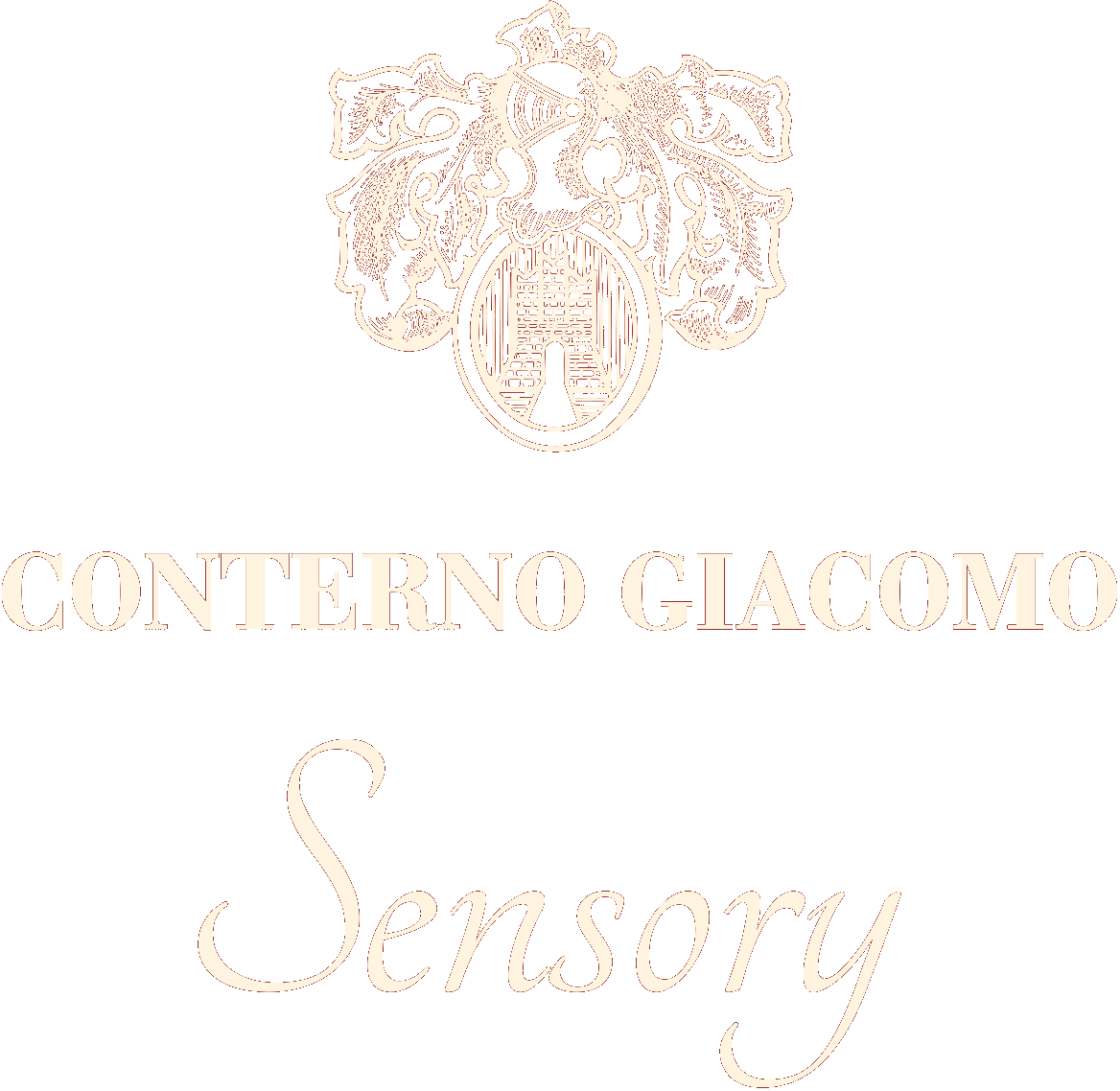
CONTERNO GIACOMO SENSORY STEM - GLASSWARE
Those who have an inkling of the intensity, focus and perfectionism that makes Giacomo Conterno the wines they are, would understand why this Sensory glass was created. Those who have visited and tasted with Roberto in the ‘cathedral’ on the outskirts of Monforte d’Alba will understand the impetus.
A long-term Zalto man, Roberto Conterno felt the need to improve even on these, to find a vessel that would fully help a wine express and intensify all its elements. A stem that would allure all the senses and if brought into play via this glass, allow a wine to express all its virtues, its phases and moods, its aromatics, layers, textures and flavours to the ultimate? Would it then still be the wine - the perfect wine - many a winemaker sets out to achieve each time?
Zweisel Kristellglass took on the challenge. Roberto and his son Gabriele (an engineer), worked together with Zweisel to design a glass that would engage with all five of the human senses. This unique and beautiful handblown stem, needed the ultimate in a craftsman’s repertoire of experience and liaison, in order to create a glass that is both a work of art and a working wine glass. Sensory has to be looked at, held, heard, even squeezed, before swirling a wine of promise, for an experience that validates Roberto Conterno’s intense belief that he should strive for perfection.
In sitting down with Roberto on a recent trip and doing the ‘tasting comparison’, it was clear that the Sensory Stem brings the fruit profile to a new level- a compelling exercise. The large base of the bowl together with its unique curve in the mid-section and subtle opening of the rim, amplifies wines, creating brighter, finer aromatics and ultimately, a sense of superior balance that fully enhances Nebbiolo’s characteristics - the perfect glass, but not just for Riserva Baroli!
pj@primaveraselections.com.au
+61 (0) 422 005 497

